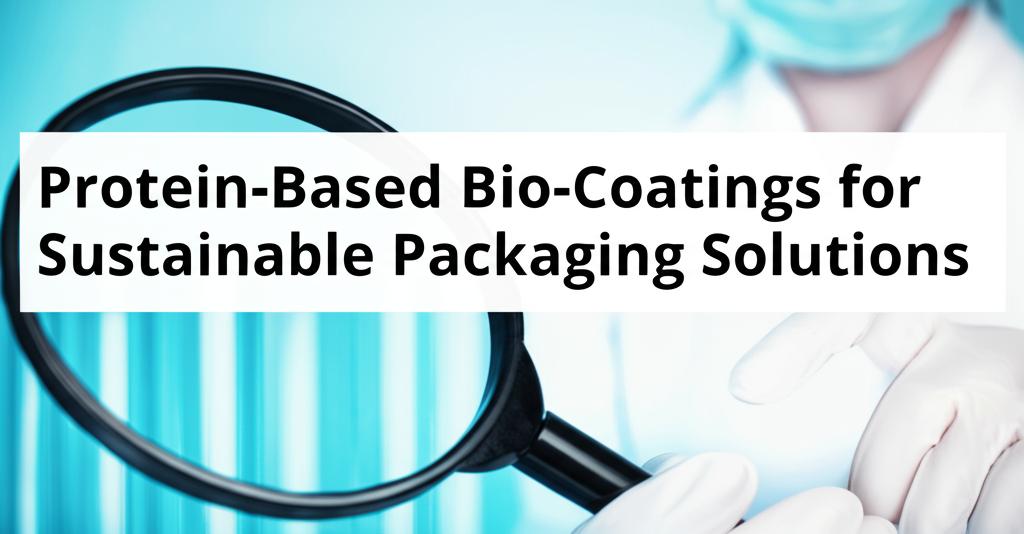Protein-based bio-coatings are rapidly advancing as a sustainable alternative to conventional, petroleum-derived packaging. These coatings utilize proteins from diverse plant sources like soy, corn zein, and wheat gluten, or animal origins such as whey, casein, and gelatin. Their primary appeal lies in biodegradability and compostability, directly addressing plastic pollution.
Functional Advantages and Recent ProgressBeyond their green credentials, protein coatings offer significant functional benefits for packaging. They can create effective barriers against oxygen, moisture, and aroma compounds, crucial for extending product shelf-life. Protein films often exhibit superior mechanical and gas barrier properties compared to those made from polysaccharides or lipids. Researchers are also engineering these films for enhanced flexibility, strength, and water resistance.
Recent innovations are pushing the boundaries of what protein-based coatings can achieve:
- Enhanced Barrier Properties: A significant challenge has been matching the barrier capabilities of traditional plastics. However, soy-protein films have demonstrated oxygen permeability significantly lower than materials like low-density methyl cellulose, starch, polyethylene, and pectin. Companies are developing biodegradable protein films with nanoclays that markedly increase tensile strength and reduce oxygen permeability.
- Active and Intelligent Packaging: Protein coatings can act as carriers for active compounds like antimicrobials, antioxidants, probiotics, and prebiotics. This "active packaging" helps preserve food quality and safety by inhibiting microbial growth or oxidation. Some advanced materials can even indicate food spoilage by changing color.
- Edible Films and Coatings: A notable trend is the development of edible protein-based films and coatings. These can be consumed with the food product, eliminating waste entirely and offering enhanced consumer convenience. Edible coatings are particularly useful for perishable items like fruits and vegetables.
- Nanotechnology and Material Blends: Incorporating nanoparticles or blending proteins with other biopolymers (like chitosan or cellulose) and plasticizers (such as sorbitol or glycerol) can significantly improve mechanical strength, water resistance, and barrier properties, while also potentially reducing costs.
- Improved Water Resistance and Processability: A key challenge for protein-based coatings is their inherent attraction to water (hydrophilicity), which can compromise water vapor barrier properties. Strategies to overcome this include chemical modifications of proteins, adding polymers or plasticizers, and surface modifications with lipids or polysaccharides. Significant progress has also been made in areas like protein extrusion, enhancing processability for coating and lamination.
- Sustainable Sourcing: There's a growing emphasis on utilizing proteins from agricultural waste and by-products, contributing to a circular economy. Plant-based proteins, including those from cereals and legumes, are extensively researched for film and coating production.
The demand for protein films is on the rise, driven by increasing environmental concerns and the shift towards biodegradable packaging in food, pharmaceutical, and cosmetic industries. The protein films market was valued at USD 1.27 billion in 2024 and is projected to reach USD 1.34 billion in 2025, with continued growth expected. Plant-based protein films are leading this trend. Multinational corporations are increasingly committing to sustainable packaging goals, further fueling this growth.
Overcoming ChallengesDespite the advancements, challenges remain:
- Cost and Scalability: Production costs can be higher than conventional plastics, and scaling up production to meet industrial demand is a hurdle. However, advances in technology are making biodegradable options more cost-competitive.
- Mechanical and Barrier Properties: While improving, some bio-based films still lag behind synthetic plastics in mechanical strength and barrier performance under certain conditions. Brittleness and water sensitivity are particular concerns for protein-based coatings.
- Consumer Acceptance and Regulation: Educating consumers and navigating regulatory approvals are also important for widespread adoption.
The future of protein-based bio-coatings for sustainable packaging appears promising. Ongoing research focuses on enhancing performance, reducing costs, and improving the sustainability of production processes, such as utilizing agro-food waste. As technology matures and economies of scale are achieved, these bio-coatings are poised to play a crucial role in creating a more circular and environmentally responsible packaging industry.

